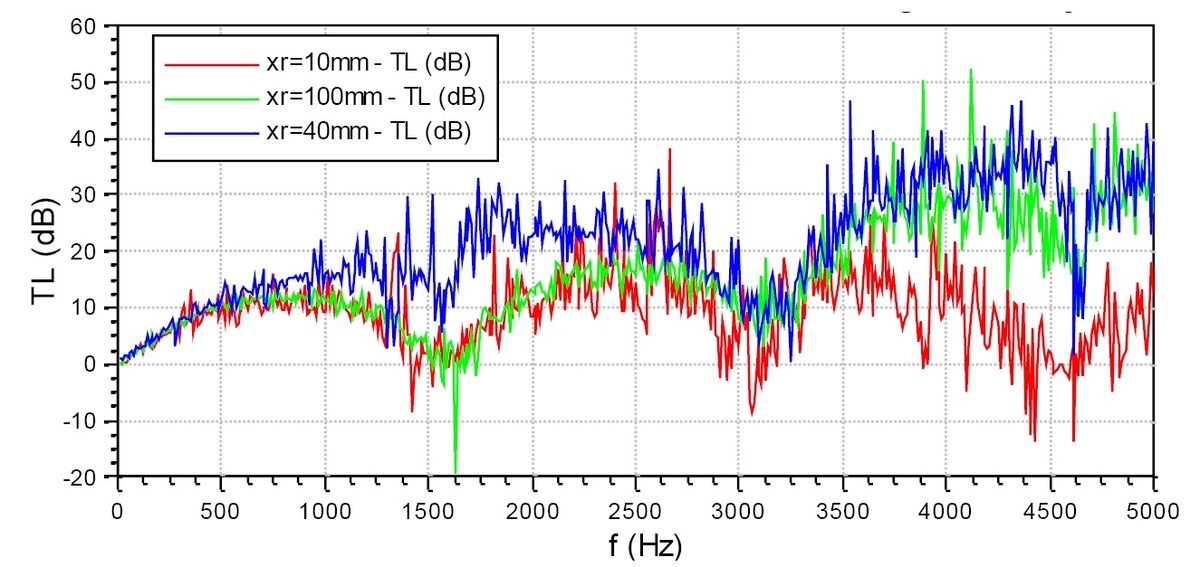Current issue
Online first
Archive
About the Journal
Aims and scope
Publisher and Editorial
Advertising policy
For Authors
Paper review procedures
Procedures protecting authentic authorship of papers
Paper preparation manual
Plagiarism check
Publication ethics
Reviewers
APC
Editorial and Scientific Board
Contact
Reviewers
Analysis of the combustion engine exhaust system structure in aspect of shaping acoustic energy
1
Faculty of Transport, Warsaw University of Technology, Poland
Submission date: 2022-10-12
Final revision date: 2023-03-30
Acceptance date: 2023-04-02
Online publication date: 2023-04-16
Publication date: 2023-06-14
Corresponding author
Combustion Engines 2023,193(2), 112-116
KEYWORDS
TOPICS
ABSTRACT
The flow of exhaust gases is the source of many physical processes, including thermal, acoustic, mechanical and chemical phenomena with high dynamics of changes. The study analyzes the impact of the entire structure of the exhaust system on the formation of acoustic energy, determining the transmission loss characteristics of its individual components and the entire system. On the example of a structure based on a proprietary solution of an adjustable reactive muffler, the possibilities of shaping the flow of acoustic waves in the process of designing and selecting exhaust systems for internal combustion engines were determined. The study was carried out with the use of the CFD method and a specialized package for advanced simulations AVL AST.
REFERENCES (19)
1.
Bender EK, Brammer AJ. Internal combustion engine intake and exhaust system noise. J Acoust Soc Am. 1975;(58):1-22. https://doi.org/10.1121/1.3806....
2.
Ji Z, Ma Q, Zhang Z. Application of the boundary element method to predicting acoustic performance of expansion chamber mufflers with mean flow. J Sound Vib. 1994;(173):57-71. https://doi.org/10.1006/jsvi.1....
3.
Selamet A, Lee IJ, Huff NT. Acoustic attenuation of hybrid silencers. J Sound Vib. 2003;262(3):509-527. https://doi.org/10.1016/S0022-....
4.
Gągorowski A. Badania wybranych struktur tłumików układów wydechowych w środowisku AVL. Prace Naukowe Politechniki Warszawskiej. Transport. 2016;(112): 101-110.
5.
Gągorowski A. Modeling of adjustable muffler in the exhaust system of an internal combustion engine. Research Methods and Solutions to Current Transport Problems, Advances in Intelligent Systems and Computing. 2020:124-132. https://doi.org/10.1007/978-3-....
6.
Kesgin U. Study on the design of inlet and exhaust system of a stationary internal combustion engine. Energ Convers Manage. 2005;46(13-14):2258-2287. https://doi.org/10.1016/j.enco....
7.
Smith PH, Morrison JC. The scientific design of exhaust and intake systems. R. Bentley Cambridge, Mass. 1971.
8.
Winterbone DE, Pearson RJ. Theory of engine manifold design, Wave action methods for IC engines. Professional engineering publishing. 2000.
9.
Sjoblom J, Papadakis K, Creaser D. Use of experimental design in development of a catalyst system. Catal Today. 2005;100(3-4):243-248. https://doi.org/10.1016/j.catt....
10.
Grzybowiska-Świerkosz B. Elementy katalizy heterogennej. Wydawnictwo Naukowe PWN. 1993.
11.
Perry R, Green D. Perry’s chemical engineers handbook, 6th edn. McGraw Hill Book Company. 1984.
12.
Lavrentjev J, Rämmal H, Tiikoja H. The passive acoustic effect of automotive catalytic converters. SAE Technical Paper 2011-24-0219. 2011. https://doi.org/10.4271/2011-2....
13.
Koltsakis GC, Konstantinidis PA, Stamatelos AM. Development and application range of mathematical models for 3-way catalysts. Appl Catal B-Environ. 1997;12(2-3):161-191. https://doi.org/10.1016/S0926-....
14.
Gągorowski A, Melon A. Selected aspects of modelling mufflers for exhaust systems of vehicles. Journal of KONES. 2013;20(2):97-103.
15.
Gągorowski A. Badanie wybranego połączenia w układzie wylotowym z uwzględnieniem analizy akustycznej. Prace Naukowe Politechniki Warszawskiej. Transport. 2018;(121):57-66.
17.
Lage JL. The fundamental theory of flow through permeable media from darcy to turbulence. Transport Phenomena in Porous Media. 1998:1-30.
18.
Kozioł-Jarosz M, Brzeżański M. The role and tasks of the support mats in the construction of catalytic converters. Combustion Engines. 2017;170(3):96-99. https://doi.org/10.19206/CE-20....
19.
Johnson TV, Joshi A. Directions in vehicle efficiency and emissions. Combustion Engines. 2016;166(3):3-8. https://doi.org/10.19206/CE-20....
Share
RELATED ARTICLE
We process personal data collected when visiting the website. The function of obtaining information about users and their behavior is carried out by voluntarily entered information in forms and saving cookies in end devices. Data, including cookies, are used to provide services, improve the user experience and to analyze the traffic in accordance with the Privacy policy. Data are also collected and processed by Google Analytics tool (more).
You can change cookies settings in your browser. Restricted use of cookies in the browser configuration may affect some functionalities of the website.
You can change cookies settings in your browser. Restricted use of cookies in the browser configuration may affect some functionalities of the website.



